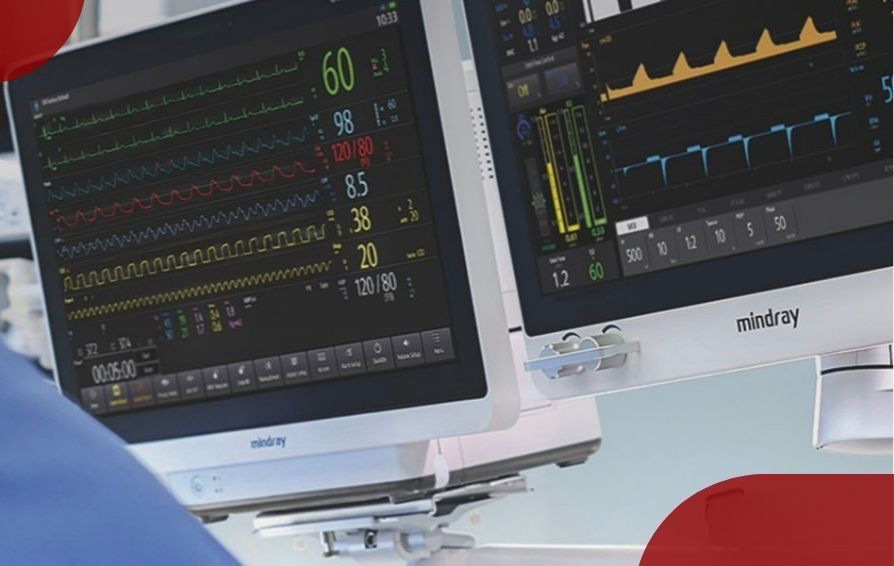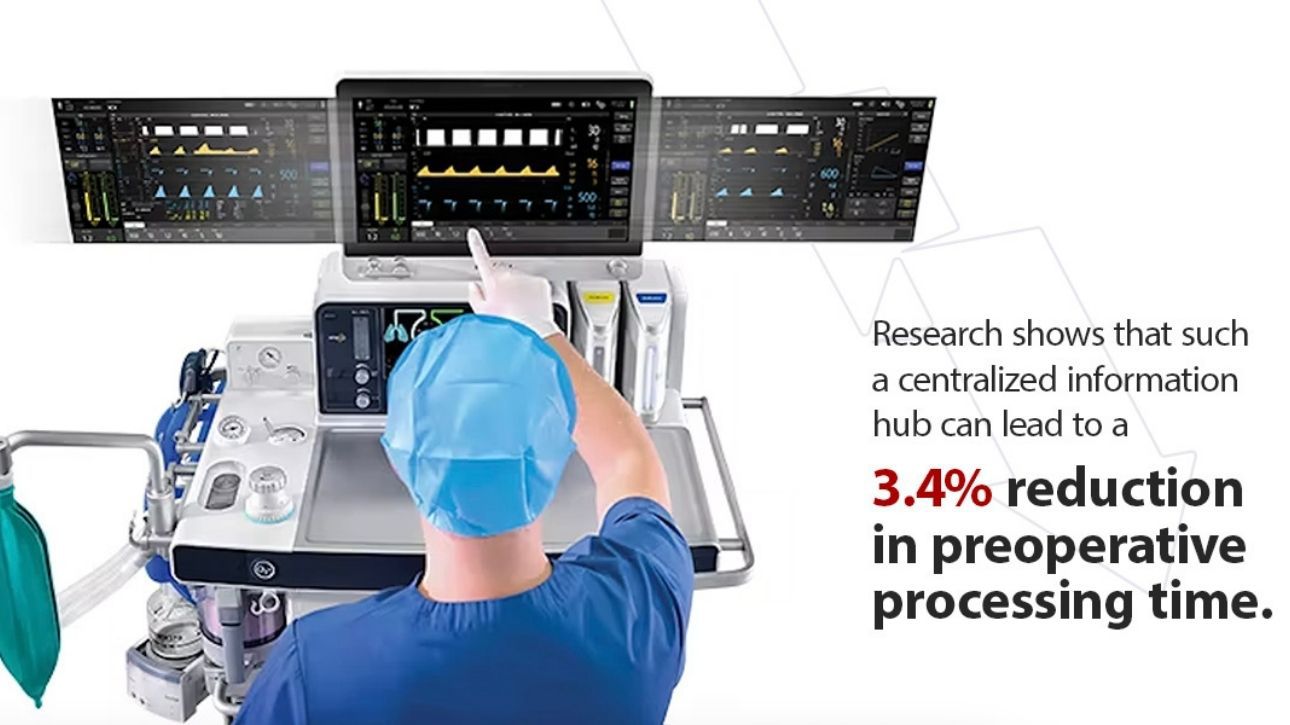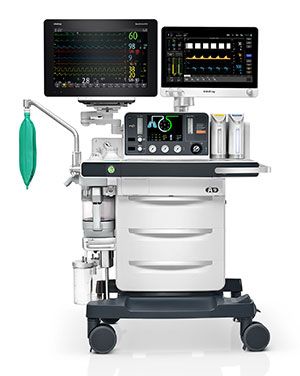Enhancing Workflow Efficiency With Advanced Anesthesia Machines
10-07-2025

Anesthesia machines are a cornerstone of any surgical facility, playing a crucial role in the operating room (OR). These machines have evolved significantly to meet the demands of surgical procedures. Today's advanced anesthesia machines are more than basic gas delivery systems — they are intelligent systems powered by cutting-edge technology.
Learn how these innovative machines enhance workflow efficiency in the OR, leading to a safer and more streamlined surgical environment.
Bottlenecks in Traditional Anesthesia Workflows
The safety of the anesthetized patient depends on the complex interplay between skilled personnel and technology. From anesthesia induction to emergence, clinicians must carefully monitor the patient during surgical procedures.Traditional anesthesia workflows present the following bottlenecks during this critical time:
- Manual documentation: Comprehensive documentation is a key responsibility for anesthesia clinicians. However, relying on manual methods to record the vast amount of intraoperative information and events can be time-consuming and error-prone. This can result in inaccurate or incomplete patient records, potentially compromising patient safety and the quality of care.
- Inefficient designs: Older anesthesia machines' outdated designs often present ergonomic challenges. Despite their bulky size, the limited workspace of these machines can force clinicians into awkward positions and movements. This can lead to disruptions, shifting their attention away from critical patient monitoring, impairing situational awareness, and contributing to feelings of fatigue.
- Communication gaps: Interruptions in information flow to the wards are one of the leading causes for up to 62% of procedural delays, possibly resulting in interpersonal conflict and further hindering OR schedules. Delays and miscommunications in sharing crucial information during the intraoperative period can have serious consequences, including errors and adverse patient outcomes.
How Advanced Anesthesia Machines Improve OR Efficiency
Advanced anesthesia machines are high-tech systems with all the essential components, such as vaporizers, ventilators, and monitoring systems. However, they include additional features like sophisticated ventilation modes, precise gas delivery systems, and intelligent automation capabilities. These advancements streamline the anesthesia process in the OR, allowing clinicians to focus on patient care.
Explore these machines' features and how they improve efficiency:
Improved Ergonomics and User Interface
Anesthesia machines must have an ergonomic and compact design to support anesthesiologists in delivering effective care. Advanced machines now incorporate features that prioritize anesthesiologists' comfort and movements, preventing strain during procedures.
For example, the levers and handles may be strategically positioned to avoid movement from interfering with the knuckles and minimize elbow movement.
The displays on these machines are often located at a lower height. Beyond reducing neck and head movements, this allows clinicians to view critical information easily. Newer units also feature clearer and brighter user interfaces, and some have a system administrator screen that provides easy access to system status information, facilitating quick troubleshooting to prevent disruptions.
Another crucial feature of advanced units is the ability to save various configuration profiles for different clinical situations. This eliminates the lengthy process of manually adjusting settings each time, enabling clinicians to quickly load a pre-configured profile customized to a specific patient or procedure.
Automated Documentation and Data Integration
In medical settings, interoperability describes clinicians' abilities to access and exchange patient health data across various systems. As a result, interoperability is crucial for overcoming the inefficiencies from communication breakdowns and manual documentation.
Ensuring the seamless integration of anesthesia machines with platforms, such as electronic medical records (EMRs) and anesthesia information management systems (AIMS), has become essential for modern anesthesia practice. These technologies automatically collect and store intraoperative data from all relevant sources, such as the anesthesia gas machine, clinical monitors, and other devices, such as infusion pumps.
In a few clicks, clinicians can effortlessly document the administration of anesthetics, fluids, and drugs, and the system automatically records patient vital signs, imaging results, and intraoperative lab test results. Such capabilities of advanced anesthesia machines can drastically reduce errors and free up more of an anesthesiologist's time to concentrate on their patients.
Enhanced Monitoring and Decision Support
Efficiency in the OR is not solely about speeding up procedures — it's fundamentally about prioritizing the highest standards of care. New anesthesia machines are equipped with state-of-the-art monitoring systems that can significantly improve patient safety. Such systems track vital signs, providing anesthesiologists with real-time data for informed decision-making. By offering comprehensive monitoring, these anesthesia machines help maintain ideal patient conditions during surgical procedures.
Accurate assessment of the depth of anesthesia is crucial for clinicians to personalize drug administration and avoid complications of under- or overdosing. Some advanced machines feature automatic controlled anesthesia (ACA), further optimizing this process. This system continuously monitors patient parameters, automatically adjusting vaporizer output and fresh gas to rapidly achieve the preset inspiratory oxygen and end-tidal agent concentration targets.
Modern units also excel in ventilation management, with sophisticated ventilators offering customizable modes adjusted to each patient’s respiratory requirements. This includes pressure-controlled ventilation with volume guarantee (PCV-VG), which allows clinicians to set specific targets, like tidal volume, to meet a patient's needs. The ventilator adjusts automatically in response to the patient's condition to meet those targets, helping to prevent lung injuries.
By automating routine tasks and complex calculations, innovations like ACA and advanced ventilation modes aim to reduce the risk of human error. Additionally, these features can streamline workflows and minimize clinicians' workloads, giving them more capacity to focus on other critical aspects of patient care.
Thanks to such advancements, there has been a remarkable reduction in anesthesia-related mortality. Today, fewer than one death occurs for every 200,000 to 300,000 procedures performed.
Case Study: The University of Mississippi Medical Center
The Department of Advanced Biomedical Education at the University of Mississippi Medical Center is dedicated to training the next generation of healthcare providers with cutting-edge equipment and simulations.
The department needed to replace its outdated anesthesia equipment with new precision technology to give learners authentic experiences they can apply in the OR. Mindray North America donated an A7 Advantage Anesthesia Workstation, allowing students and residents to train in a setting that's similar to what they will see in the OR.
Since the A7 Anesthesia Machine integrates with Mindray Patient Monitors, like BeneVision N17 Patient Monitors, students needing to learn patient hemodynamic monitoring are being trained with the equipment as well.
Kenneth Rainey, Associate Chief of Infrastructure in the Department of Anesthesiology, commented that they had already purchased 28 of Mindray's machines and were considering standardizing all their anesthesia machines with the A7 Anesthesia System. According to Rainey, the equipment acquisition committee realized that the technology “blew every other product out of the water."

